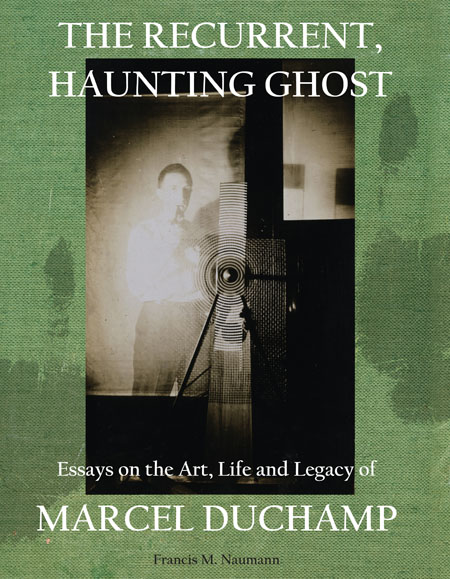

Reading about Marcel Duchamp can be hard work, unless the writer has Francis Naumann’s ability to leaven imaginative scholarship with clarity, candor, insight, and high spirits. The most influential artist of the last century caught Naumann’s attention more than forty years ago, when he saw a reproduction of Duchamp’s bicycle wheel mounted on a kitchen stool, and asked himself how this could be art. The question has pursued him ever since, and his consistently fresh approaches to Duchamp’s work and Duchamp’s life, set down in agile and jargon-free prose, make these collected essays the single most informative book you will find on the endlessly fascinating artist.
-Calvin Tomkins
Marcel Duchamp (1887-1968) is considered the most influential artist of the modern era. In 2004, a group of British art professionals declared Fountain—the infamous white porcelain urinal that Duchamp signed with a pseudonym and placed on public display in an art exhibition in New York in 1917—to be the single “most influential modern art work of all time.” Conservative critics call such an assertion preposterous, yet no one can deny the degree to which the concept of the readymade has affected the art of our times. The historical record has demonstrated that Duchamp not only influenced the formation and direction of the Pop, Minimal and Conceptual Art movements of the 1960s and 1970s, but that he anticipated some of the most radical and advanced manifestations of current contemporary art. Some go so far as to predict that the intellectual strategies his work introduced will continue to serve as a guiding beacon for generations of artists in the future, at least those who seek a more conceptually oriented approach to art and to the art-making process.
Francis M. Naumann has been writing about the art and ideas of Marcel Duchamp for nearly forty years. The present compilation consists of articles he has published in various scholarly catalogues and journals, although they have been extensively revised and expanded for inclusion in this publication. A number of new essays were written specially for this volume (several of which are based on lectures that he has delivered on the artist over the years). The book is designed to address not only the major works produced by Marcel Duchamp—from the Nude Descending a Staircase (1912) and Large Glass (1915-23), to the Etant donnés (1946-66)—but to engage readers with the major themes that occur with some consistency in a lifetime of work: chess, optics, humor, eroticism, anarchy, replication, money and art, etc.
The conceptual nature of Duchamp’s work invites the application of varied and innovative methods to decipher its intent and meaning. In the present study, the author’s approach has been primarily contextual, in that he has attempted to determine the facts and circumstances of the artist’s life and times that were most responsible for bringing a specific work of art into being. Select examples of Duchamp’s artistic production, for example, are viewed through the popular culture from which they emerged, revealing sources unexplored in prior writings on the artist. Duchamp’s personal relationships—from casual encounters to intimate liaisons—are carefully examined in an effort to determine the extent to which they contributed to the conception and execution of specific works. Following the artist’s notion that a work of art is completed only when viewed by a spectator, the opinions of art historians and critics who have objected to Duchamp’s redefinition of art are considered and, for the first time, responded to in a clear and systematic fashion. The issue of influence is also addressed, demonstrating that the example of his work was crucial to a host of younger artists, beginning with Andy Warhol and concluding with Jeff Koons. It is also acknowledged that Duchamp’s influence has just as often been misattributed, leading to confusion and, ultimately, to an unfortunate misunderstanding of his artistic legacy.